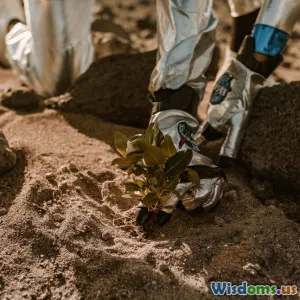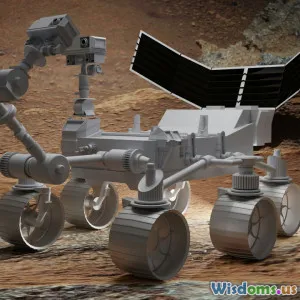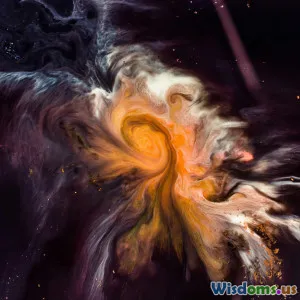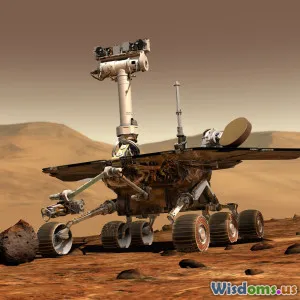
Astrobiology: The Science of Life Beyond Earth
8 min read Explore the quest for life beyond Earth through astrobiology's cutting-edge science and discoveries. (0 Reviews)
Astrobiology: The Science of Life Beyond Earth
Introduction
Is Earth the only cradle of life in the vast cosmos, or does life flourish in myriad forms and locations beyond our planet? This question ignites the fiery curiosity at the heart of astrobiology, the multidisciplinary science dedicated to studying the origin, evolution, distribution, and future of life in the universe. Astrobiology sits at the crossroads of astronomy, biology, chemistry, and geology, humbly grappling with some of humanity’s biggest questions: Are we alone? What forms could life take beyond our familiar terrestrial blueprint? And where should we look to find it?
This article unpacks the science of astrobiology, spotlighting key concepts, landmark discoveries, and the ambitious quests underway to detect life beyond Earth.
From Earth to the Stars: What Is Astrobiology?
Astrobiology, sometimes called exobiology, emerged as a formal discipline in the late 20th century. It explores life’s potential throughout the cosmos by examining several interconnected fields:
- Origins of life: Understanding how life arose on Earth helps identify possible pathways it might take elsewhere.
- Habitability: Studying planetary environments capable of supporting life-like conditions.
- Biosignatures: Detecting signs of past or present life via atmospheric, chemical, or geological markers.
- Extremophiles: Investigating Earth organisms thriving in extreme environments to infer life's potential on other worlds.
Dr. Lynn Rothschild, an influential astrobiologist, summarized this holistic approach: “Astrobiology asks not just ‘Is there life elsewhere?’ but ‘How does life arise, adapt, and survive across even alien realms?’”
The Crucial Role of Extremophiles
Key to unlocking astrobiological mysteries are extremophiles — organisms that flourish in harsh conditions once thought inhospitable to life. For example:
- Thermophiles live in near-boiling hydrothermal vents on Earth’s ocean floors.
- Acidophiles survive in acidic mine drainage with pH close to zero.
- Psychrophiles thrive in icy Antarctic subglacial lakes.
These life forms demonstrate remarkable biochemical adaptations, broadening the definition of what “habitable” means. If life can endure such extremes on Earth, it hints that life might exist in the subsurface oceans of moons like Jupiter’s Europa or Saturn’s Enceladus — places once dismissed as barren.
Searching for Life: Where and How?
Mars: The Red Planet’s Allure
Mars remains the poster child for astrobiological investigation. Missions like NASA’s Perseverance rover are carefully examining signs of ancient life, focusing on:
- Sedimentary rocks that might contain biosignatures of microbial life.
- Organic molecules preserved over billions of years.
- Traces of water activity thought essential for life.
In 2020, Perseverance carried the MOXIE experiment, designed to produce oxygen from Mars’ CO2 atmosphere—a technological leap for future human colonization and life-support strategies.
Ocean Worlds: Europa and Enceladus
Beyond Mars, icy moons captivate astrobiologists. Europa and Enceladus harbor subsurface oceans beneath thick ice crusts, warmed by tidal interactions with their giant planets. Enceladus’s plumes, made of water vapor and organic compounds, ejected into space, offer tantalizing targets for remote and direct sampling missions.
The upcoming Europa Clipper mission aims to analyze these environments in unprecedented detail, seeking signs of habitability or even extant life.
Exoplanets: Searching for Earth’s Twins
The discovery of over 5,000 exoplanets by NASA’s Kepler and TESS telescopes has revolutionized astrobiology. Among them, many Earth-sized planets reside within their stars’ “habitable zones,” where liquid water might exist. For example, the Trappist-1 system contains seven Earth-like planets, some within range for detailed atmospheric study.
Upcoming observatories like the James Webb Space Telescope will analyze exoplanet atmospheres, looking for gases like oxygen, methane, and carbon dioxide in disequilibrium — potential biosignatures.
Detecting Life: Biosignatures and Beyond
Detecting life remotely requires identifying biosignatures — measurable indicators of life processes. These may include:
- Atmospheric signatures: Gases produced or influenced by biological activity.
- Surface pigments: Changes in reflectance caused by photosynthetic organisms.
- Isotopic ratios: Elemental imbalances suggestive of biological fractionation.
One promising technique involves detecting chemical disequilibrium, where atmospheric gases coexist in proportions unlikely without life — Earth’s oxygen and methane coexistence is a classic example.
However, astrobiologists caution against false positives since some abiotic processes can mimic life signatures; thus, confirming extraterrestrial life demands multiple lines of evidence.
The Human and Technological Frontier
Astrobiology is not purely academic—it informs technology development and space exploration frontiers. The Mars Sample Return mission, a collaboration between NASA and ESA, seeks to bring Martian rock and soil samples back to Earth for detailed analysis, potentially revolutionizing our understanding.
Furthermore, the growing field of synthetic biology explores creating life or life-like systems, aiding in understanding life’s essential features and supporting potential terraforming efforts.
Dr. Katie Stack Morgan, Perseverance project scientist, emphasizes the excitement: “Every rover landing is a step closer to answering whether Mars once hosted life — or even if it does today — driven by the brilliant work of astrobiologists.”
Conclusion
Astrobiology embodies humanity’s enduring question: Are we alone in the universe? By bridging disciplines and planetary frontiers, it opens pathways to profound discoveries, driving exploration of Mars, icy moons, and distant exoplanets.
Honeycombed with clues from Earth’s most resilient organisms to the faint spectral signatures billions of kilometers away, astrobiology unites curiosity and rigorous science. As new missions gather data and push technology’s limits, the next decades hold tremendous promise for transforming the cosmic landscape of life — from hopeful speculation to concrete understanding.
The quest continues, inviting us all to look up with wonder and scientific rigor, charting the universe’s capacity to harbor life beyond our singular world.
References & Further Reading:
- NASA Astrobiology Institute: https://astrobiology.nasa.gov
- "The Search for Life in the Universe" – edited by Bruce Jakosky, University of Arizona Press
- "Astrobiology: A Brief Introduction" by Kevin W. Plaxco and Michael Gross
- "Life in the Universe" by Jeffrey Bennett et al.
- Recent publications in Astrobiology journal
Rate the Post
User Reviews
Popular Posts




















